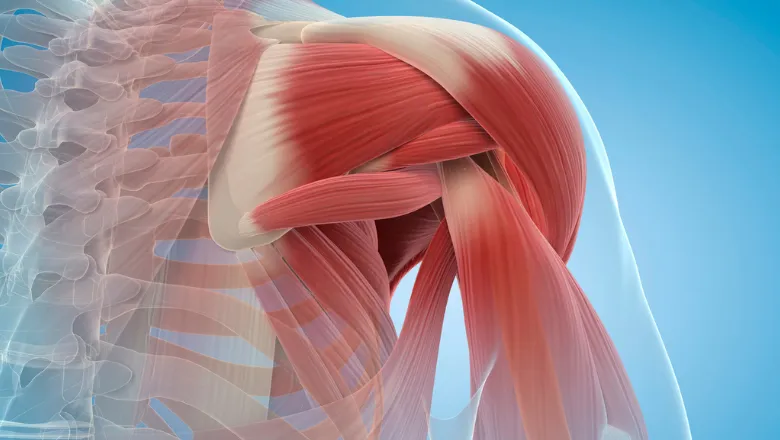For decades muscle contraction was thought to be exclusively controlled by calcium. Our results show that the activation of the myofilaments in skeletal muscle is controlled by two force-sensing mechanisms that, if disrupted, might contribute to the loss of force in muscle diseases and ageing.
Dr Luca Fusi, Sir Henry Dale Fellow of the Randall Centre for Cell & Molecular Biophysics
07 June 2023
New mechanism described for muscle contraction
A new publication from King's researchers describes a new mechanism required for muscle contraction, which could have important implications for understanding the impact of ageing on muscle contraction as well as molecular mechanisms for muscle diseases.

A paper from King's researchers describes a newly discovered force-sensing mechanism within muscle cells that’s required for muscle contraction. Understanding this new mechanism could be important in studying the impact of ageing on muscle contraction as well as molecular mechanisms for muscle diseases.
The traditional textbook understanding is that muscles contract when calcium ions are released within the muscle cell. This switches on the thin filaments of the cell which are then pulled by myosin motors on the thick filaments, triggering the contraction of the muscle cell.
Recent experiments have shown a new molecular mechanism independent of calcium that regulates the contraction of muscles, specifically the modulation of the number of active myosin motors on the thick filament that interact with the thin filament. However, it was unclear how this thick filament-based regulatory mechanism is coupled to the mechanism of activation of the thin filament triggered by calcium.
In a new paper published in the Proceedings of the National Academy of Sciences (PNAS), Dr Luca Fusi and his colleagues describe a novel dual-filament mechanism that controls the strength and speed of contraction in skeletal muscle.
Their results show that the thin filament is only partially activated by calcium and requires the force generated by the myosin motors to be fully switched on.
In addition to this, the myosin motors on the thick filament do not automatically bind to the thin filament because they are locked onto the filament surface. The authors discovered that force needs to be applied to the backbone of the thick filament, which activates the myosin motors from its off state. These insights highlight how muscle contraction requires two different force-sensing mechanisms in thin and thick filaments.
Their findings elucidate how both thick and thin filaments regulate the contraction of muscle cells. This new mechanism could be an important factor behind issues with muscle contraction that arise as people get older, as well as experience from muscle diseases.
For Dr Luca Fusi, the next step will be to look at whether disruptions to this new dual-filament mechanism is linked to the loss of force in human muscle due to ageing.
Read the full paper: Activation of skeletal muscle is controlled by a dual-filament mechano-sensing mechanism.

